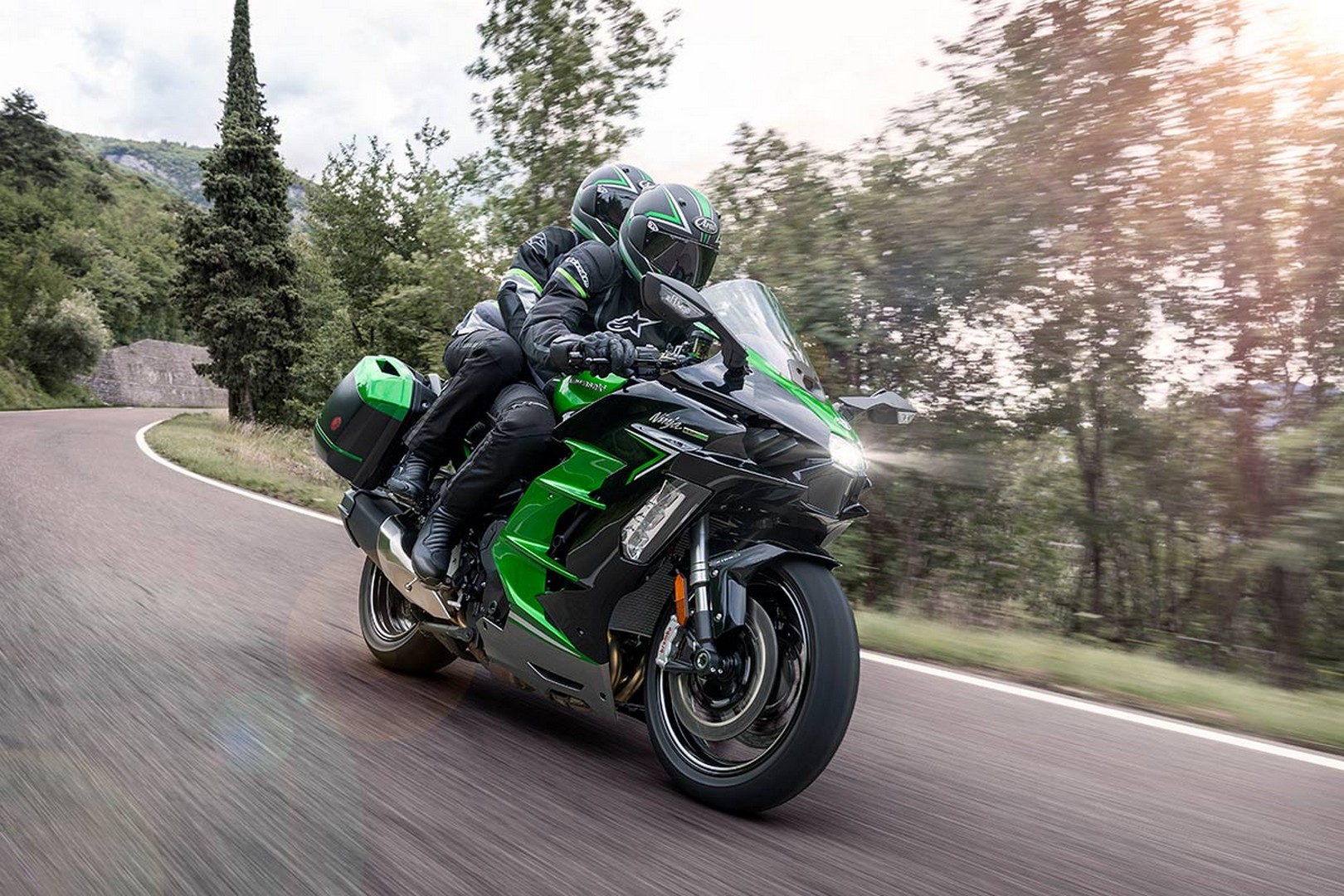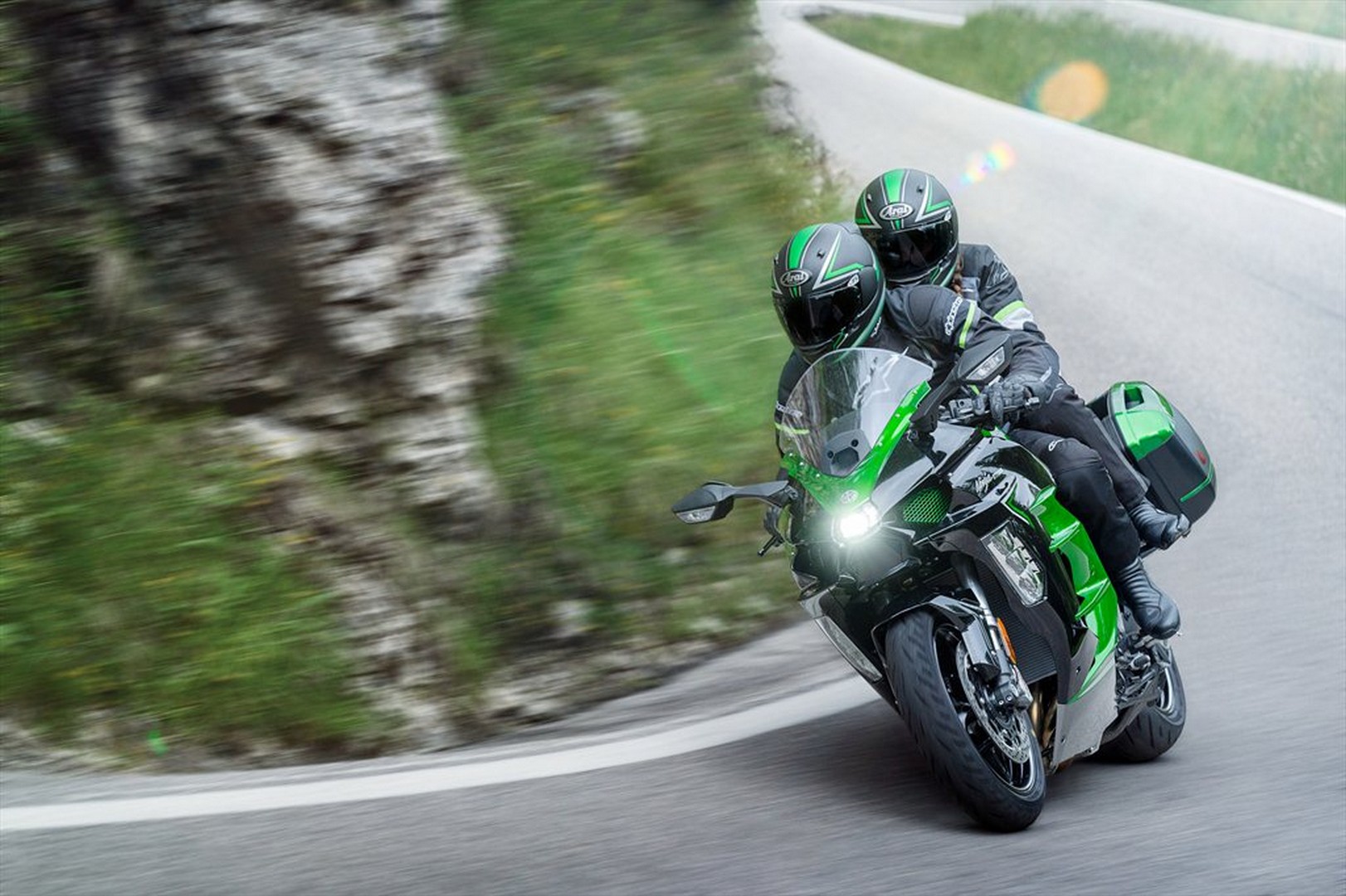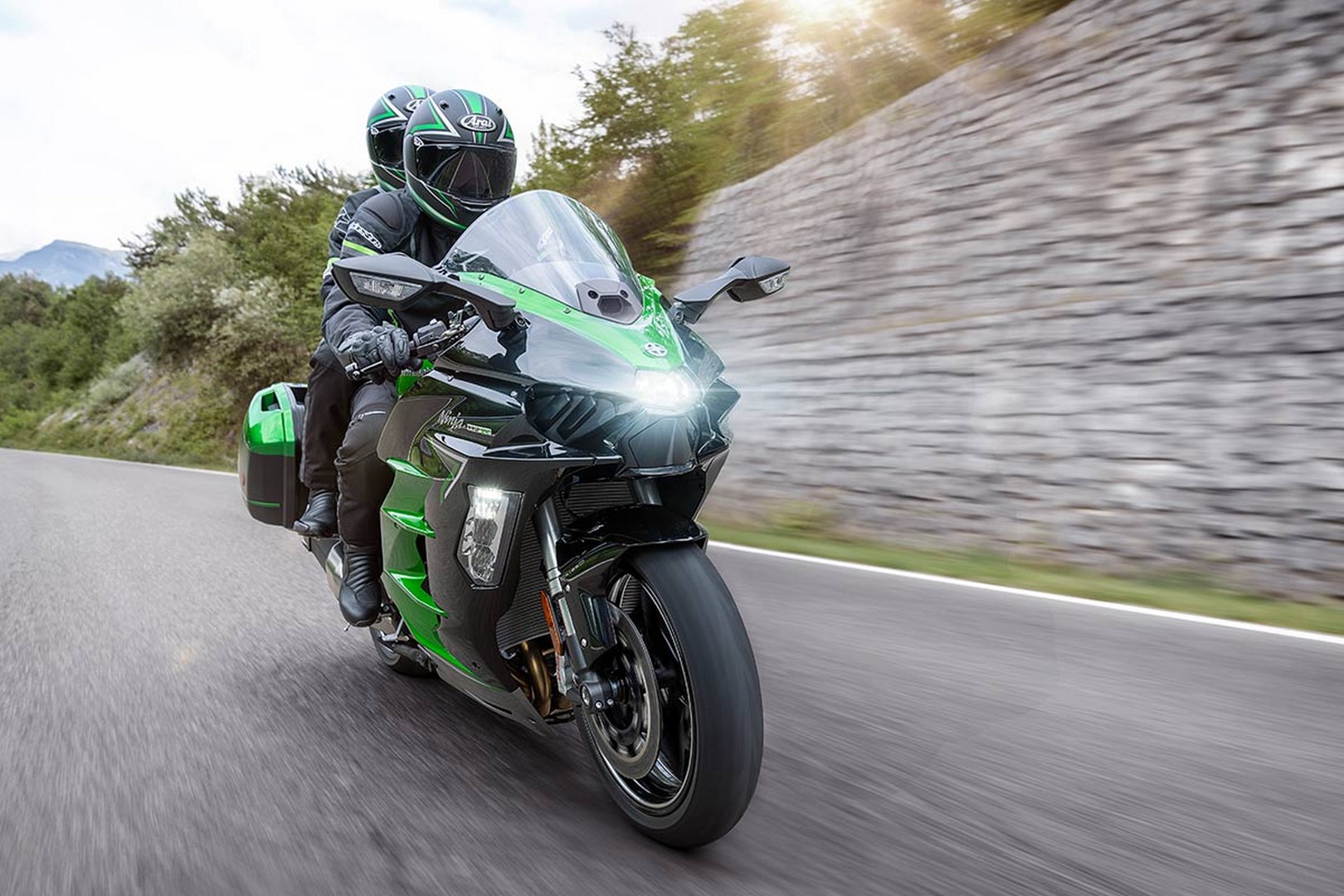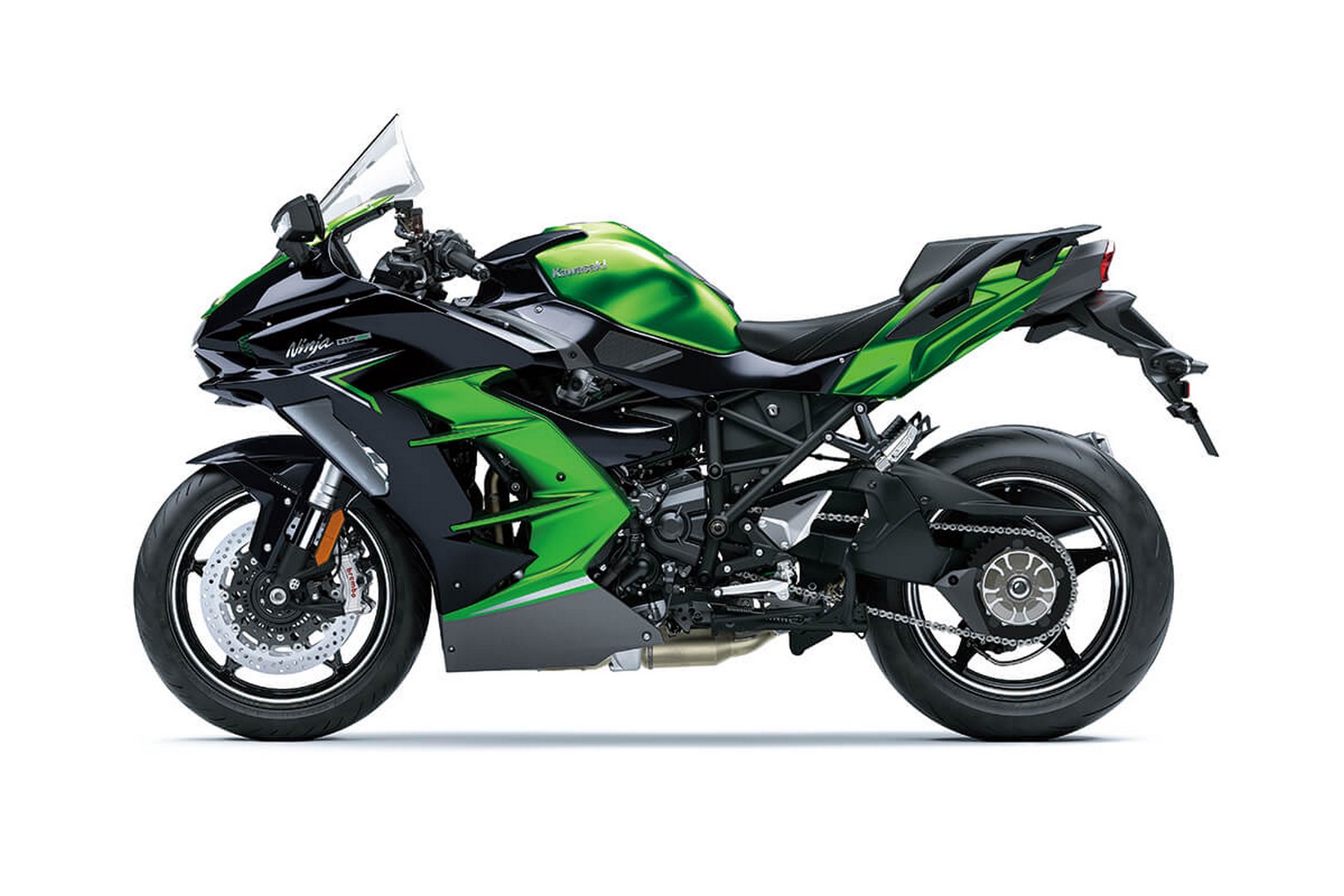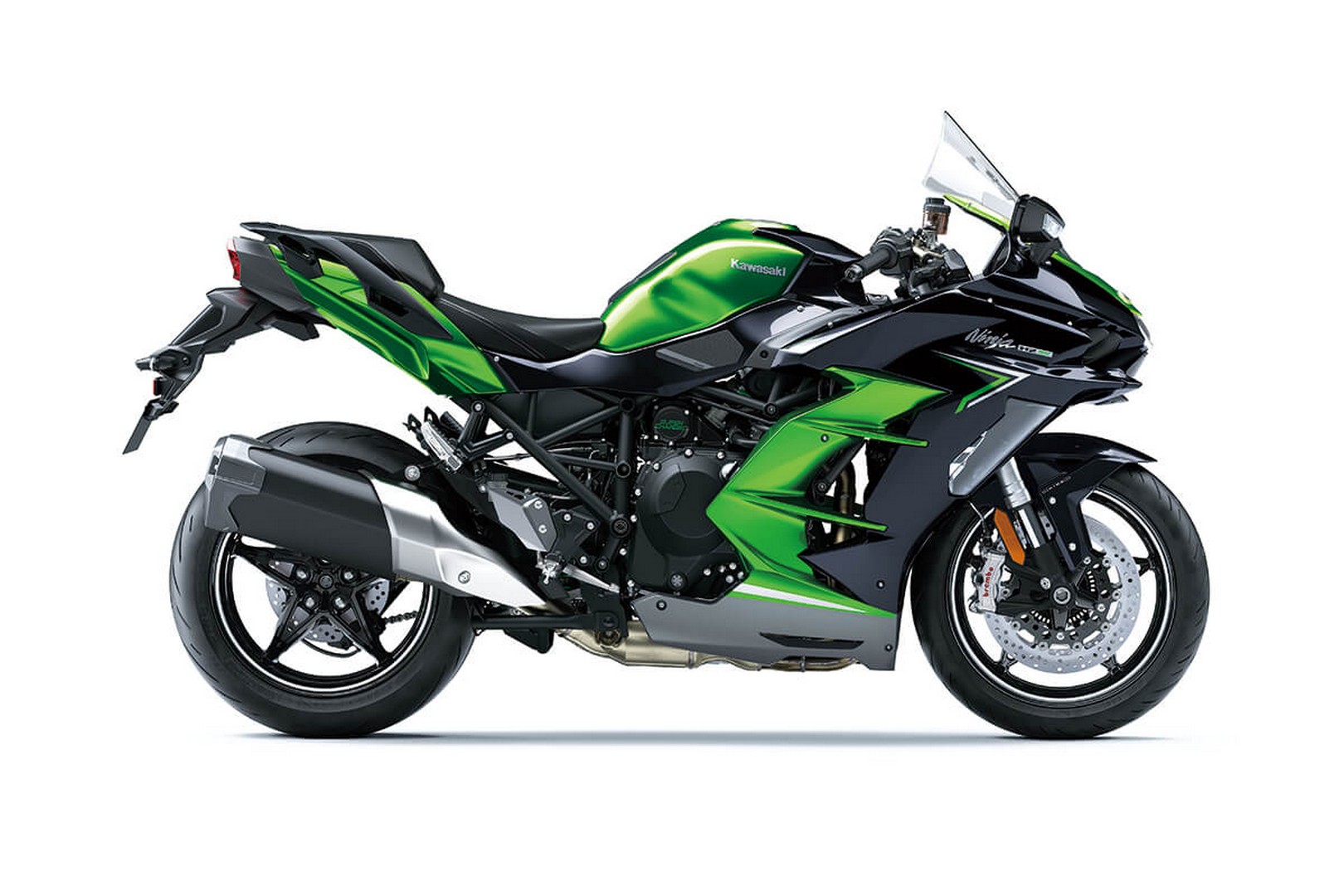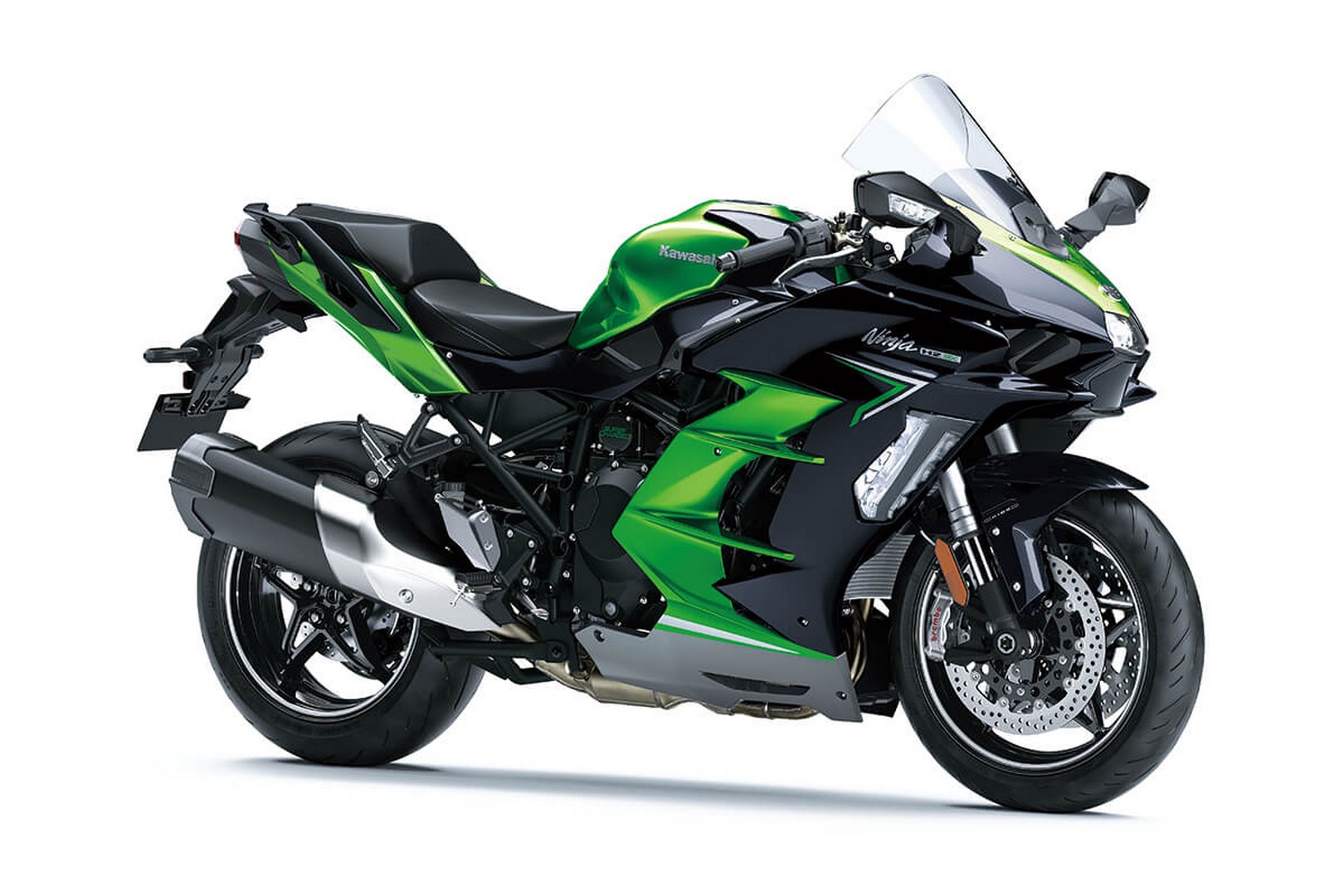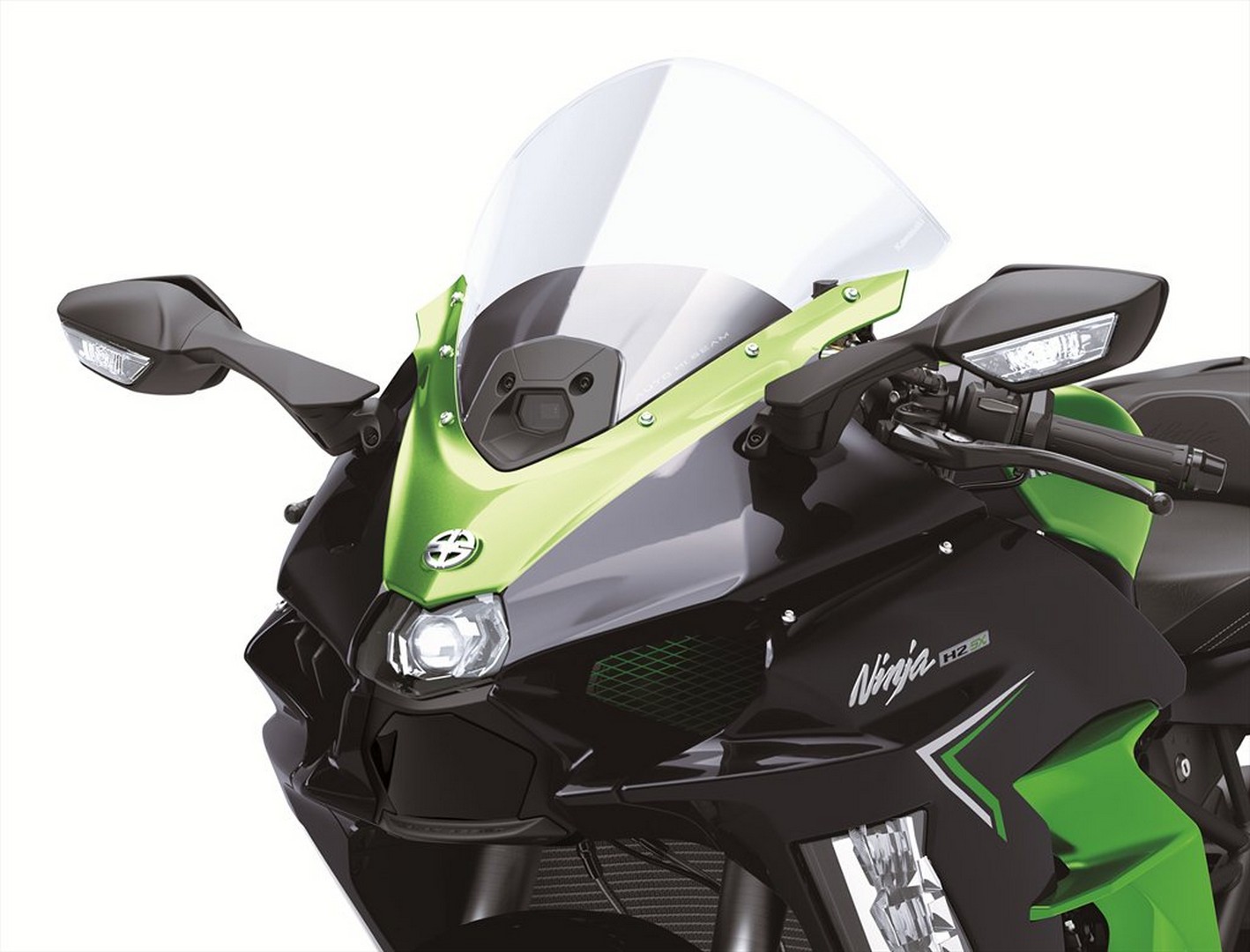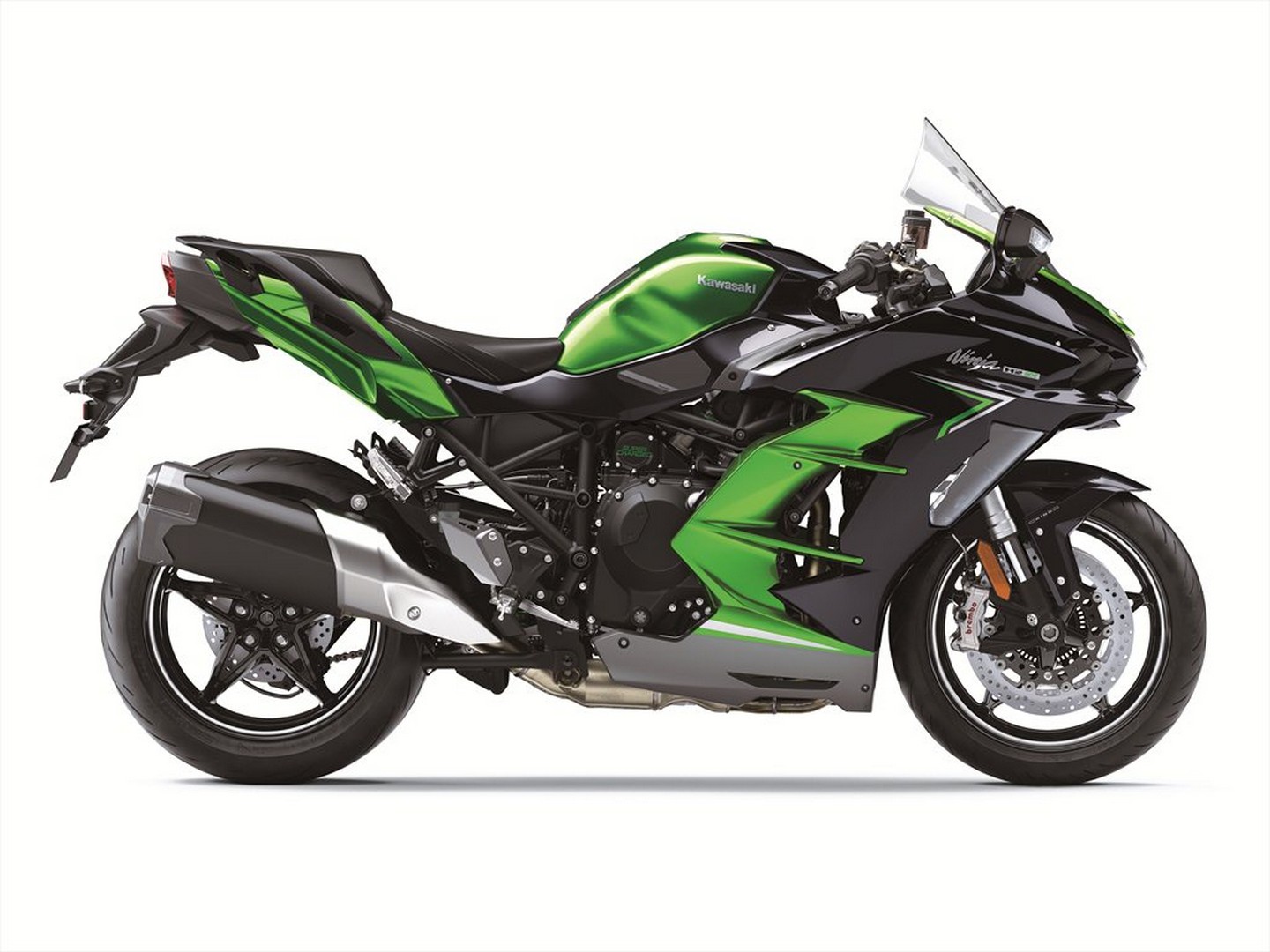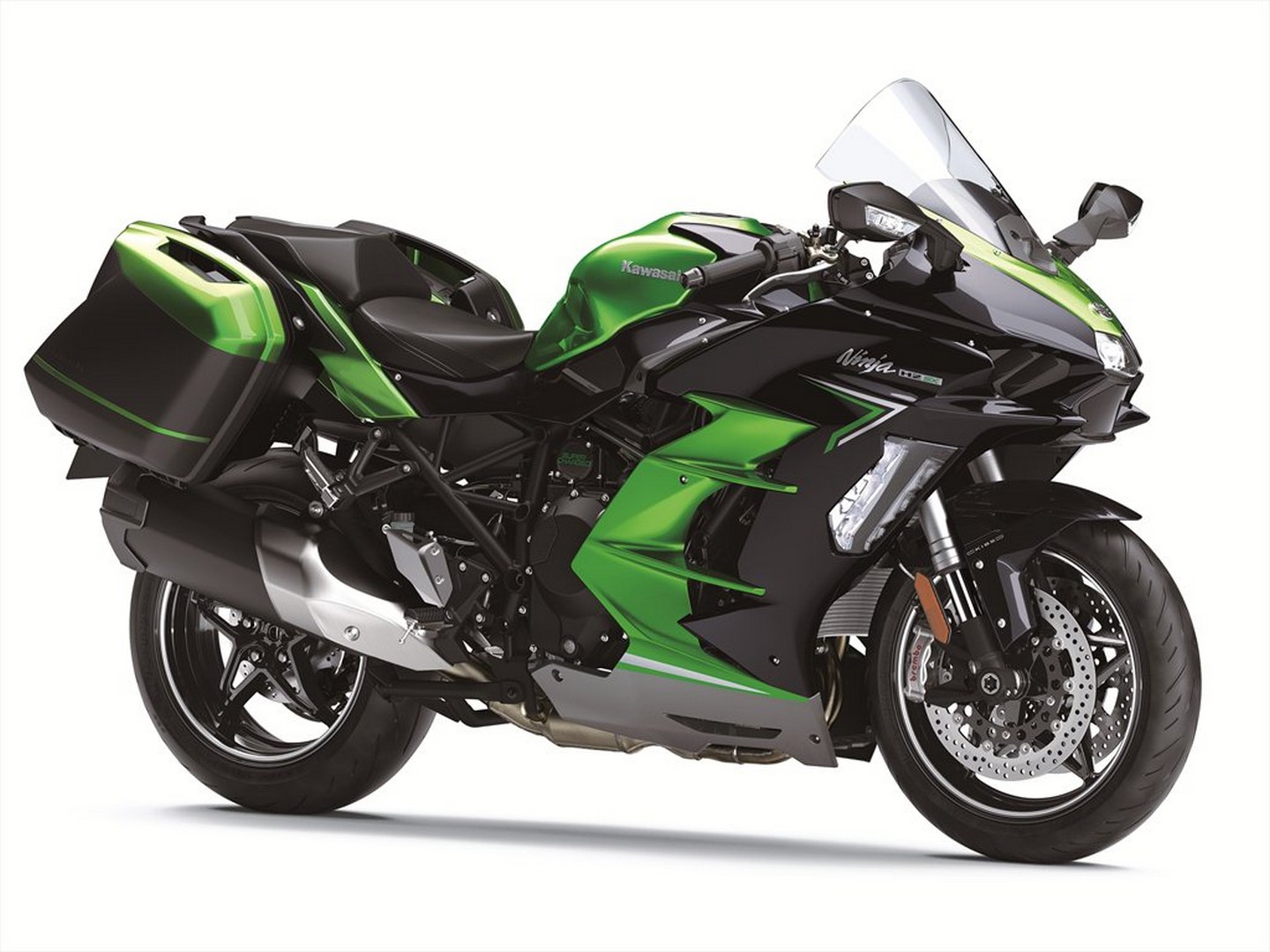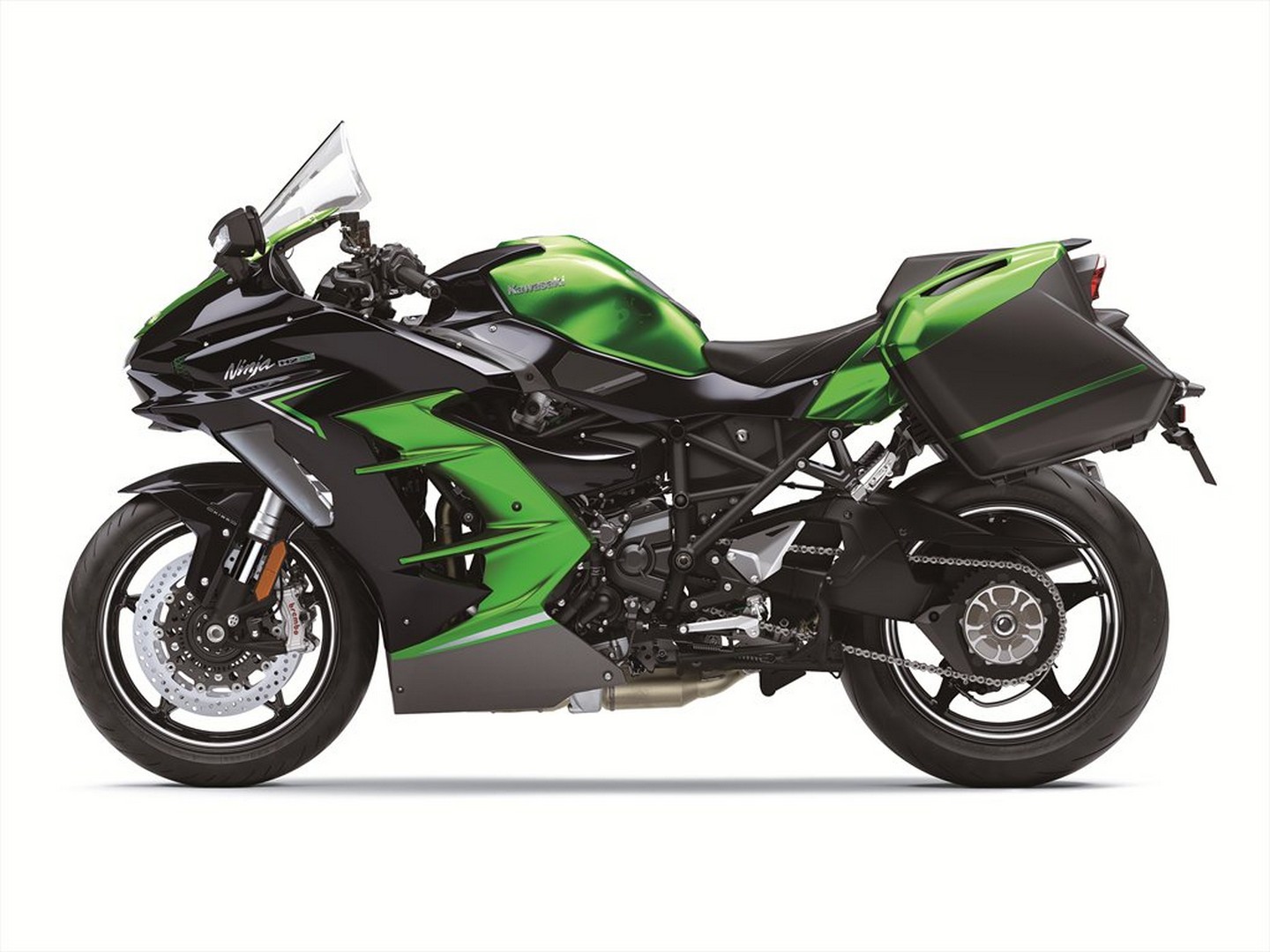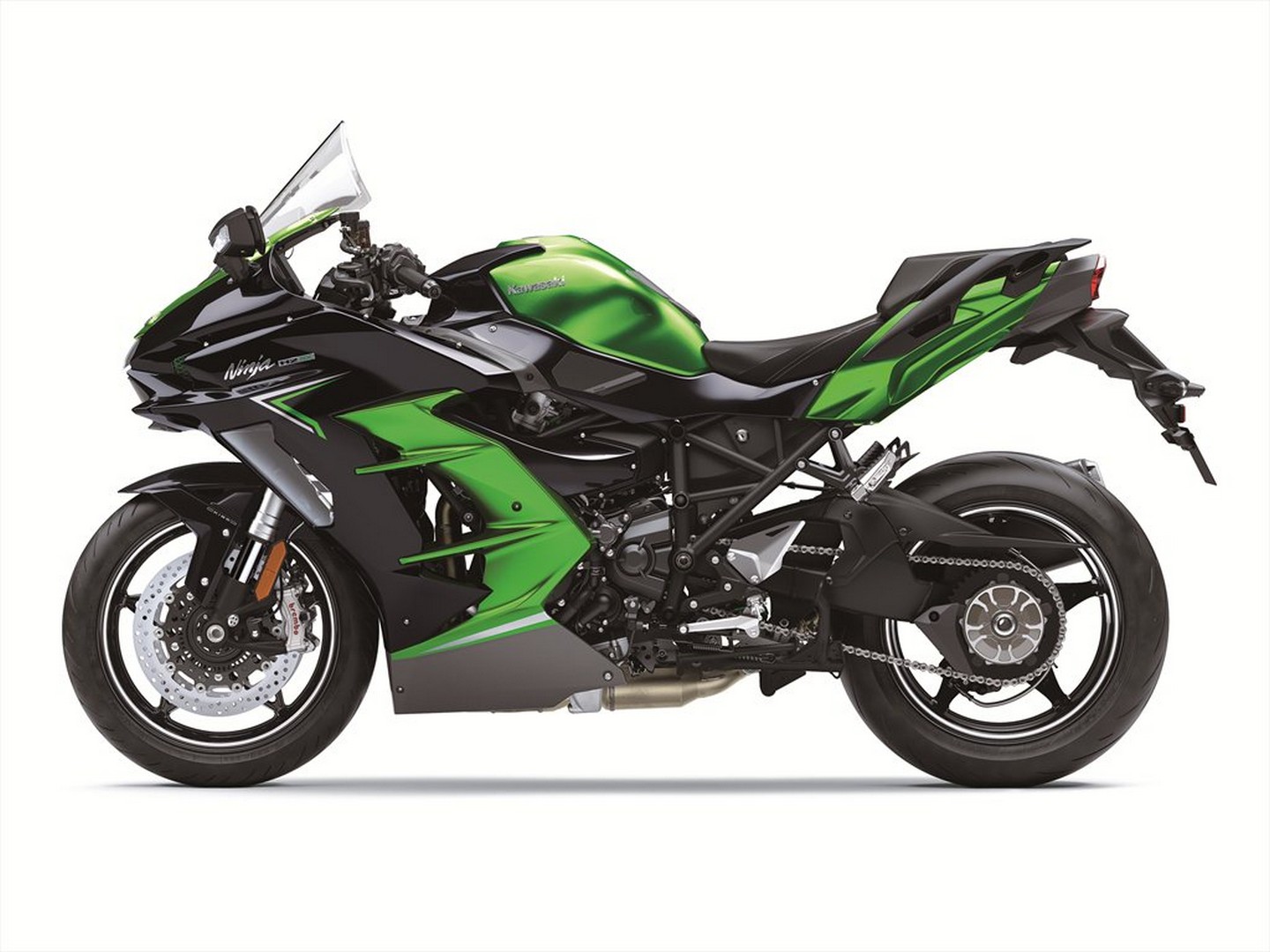The 2023 Kawasaki Ninja H2 SX SE Combines Touring And Massive Performance Capabilities
Contents
The 2023 Kawasaki Ninja H2 SX SE is a sport touring motorcycle designed for riders who demand both performance and comfort and is a top contender in the Japanese sport touring category. This bike is powered by a supercharged 998cc, 197 horsepower engine that delivers impressive acceleration and top-end speed, while also being equipped with advanced rider aids and touring amenities. The Ninja H2 SX is a highly versatile machine that can easily transition between sport riding and touring. While not a dedicated touring bike like other options in this year’s Kawasaki lineup, the bike’s comfortable riding position, adjustable windscreen, and spacious saddlebags make it an ideal choice for long-distance rides, while its supercharged engine and sport-tuned suspension ensure that it’s equally at home on twisty backroads.
In terms of technology, the Ninja H2 SX is loaded with advanced features that enhance both performance and comfort. These include a full-color 6.5” TFT display, integrated riding modes, traction control, and Kawasaki’s Cornering Management Function, which helps the rider maintain control while navigating turns. The bike also features a range of touring amenities, including heated grips, cruise control, and a large fuel tank that provides ample range for extended rides. The 2023 Kawasaki Ninja H2 SX SE is an exceptional motorcycle that offers the perfect balance of performance and comfort for riders seeking the ultimate sport touring experience.
The 2023 Kawasaki Ninja H2 SX SE starts at $28,000 USD / $37,500 CAD
On this page: we’ve curated specs, features, news, photos/videos, etc. so you can read up on the new 2023 Kawasaki Ninja H2 SX SE in one place.
Model Overview
General Info
- Price: $28,000 USD / $37,500 CAD
- Key Features:
-
- Hard saddlebags available
- 998cc supercharged engine
- six-axis IMU
- 6.5 inch TFT dash
Main Specs
- Engine: 998cc, liquid-cooled, 4-stroke, DOHC 16-valve in-line four
- Power: 197 horsepower
- Torque: 101lb-ft
- Weight: 590 lbs (267 kgs)
- Seat Height: 32.9 inches (835 mm)
Competitors
2023 Kawasaki Ninja H2 SX SE Specifications
ENGINE |
||
| Engine | 998 cc Liquid -cooled, 4-stroke, In-Line Four, DOHC, 16-valve | |
| Power | 197 HP | |
| Bore x Stroke | 76.0 x 55.0mm | |
| Compression Ratio |
11.2:1
|
|
| Fuel System | DFI® with 40mm throttle bodies; Kawasaki Supercharger | |
| Starter | Electric | |
| Maximum Torque | 101.0 lb-ft. | |
DRIVETRAIN |
||
| Clutch | ||
| Transmission | 6-speed, Manual, Return Shift, Dog Ring | |
| Final Drive | Sealed chain | |
CHASSIS |
||
| Suspension Front | 43mm inverted fork with KECS-controlled rebound and compression damping, manual spring preload adjustability and top-out springs/4.7 in | |
| Suspension Rear | Uni-Trak®, BFRC gas charged shock with piggyback reservoir, KECS-controlled compression and rebound damping electronically-adjustable spring preload/5.5 in | |
| Brakes Front | Dual radial-mount, opposed 4-piston Brembo Stylema® monobloc calipers, dual semi-floating 320mm discs, KIBS ABS | |
| Brakes Rear |
Opposed 2-piston calipers, single 250mm disc, KIBS ABS
|
|
| Tires Front | 120/70 ZR17 (58W) | |
| Tires Rear | 190/55 ZR17 (75W) | |
| Fuel Tank Capacity | 5.0 gal | |
| Color |
Emerald Blazed Green/Metallic Diablo Black/Metallic Graphite Gray
|
|
ELECTRICAL |
||
| Ignition | TCBI w/Digital Advance | |
| Spark Plugs | ||
| Headlight | LED | |
| Tail Light | LED | |
DIMENSIONS |
||
| Overall Length | 85.6 in | |
| Overall Width | 31.1 in | |
| Overall Height | 49.6 in | |
| Wheelbase | 58.3 in | |
| Ground Clearance | 5.1 in | |
| Seat Height | 32.9 in | |
| Curb Weight | 590.9 lb | |
WARRANTY |
||
| Warranty | 12 Month Limited Warranty | |
| Kawasaki Protection Plus | 12, 24, 36 or 48 months | |
2023 Kawasaki Ninja H2 SX SE Features
Assist & Slipper Clutch
Under normal operation, the assist cam functions as a self-servo mechanism, pulling the clutch hub and operating plate together to compress the clutch plates. This allows the total clutch spring load to be reduced, resulting in a lighter clutch lever feel when operating the clutch.
When excessive engine braking occurs – as a result of quick downshifts (or an accidental downshift) – the slipper cam comes into play, forcing the clutch hub and operating plate apart. This relieves pressure on the clutch plates to reduce back-torque and helps prevent the rear tire from hopping and skidding. This race-style function is particularly useful when sport or track riding.
Economical Riding Indicator
While effective vehicle speed and engine speed may vary by model, paying attention to conditions that cause the “ECO” mark to appear can help riders improve their fuel efficiency – a handy way to increase cruising range. Further, keeping fuel consumption low also helps minimize negative impact on the environment.
Electronic Cruise Control
Electronic Throttle Valves
Electronic throttle valves also enable more precise control of electronic engine management systems like S-KTRC and KTRC, and allow the implementation of electronic systems like KLCM, Kawasaki Engine Brake Control, and Electronic Cruise Control.
Kawasaki Engine Brake Control
KLCM (Kawasaki Launch Control Mode)
KCMF (Kawasaki Cornering Management Function)
KTRC (Kawasaki Traction Control)
Less intrusive modes maintain optimum traction during cornering. Designed with sport riding in mind, they facilitate acceleration out of corners by maximizing forward drive from the rear wheel. And because Kawasaki’s sophisticated software bases its dynamic analysis on the chassis’ orientation relative to the track surface (rather than relative to a horizontal plane), it is able to take into account corner camber, gradient, etc., and adapt accordingly.
In the more intrusive modes (and for some models, in any mode), when excessive wheel spin is detected, engine output is reduced to allow grip to be regained, effectively enabling riders to negotiate both short, slippery patches (train tracks or manhole covers) and extended stretches of bad roads (wet pavement, cobblestone, gravel) with confidence.
KQS (Kawasaki Quick Shifter)
Power Modes
Smartphone Connectivity
Supercharged Engine
One of the greatest benefits of designing the supercharger in-house and tailoring its design to match the engine’s characteristics was that engineers were able to achieve high-efficiency operation over a wide range of conditions – something that would not have been possible by simply dropping in or trying to adapt an aftermarket automotive supercharger.
The importance of high efficiency in a supercharger is that, as the air is compressed, power-robbing heat gain is minimal. And while many superchargers are able to offer high-efficiency operation in a very limited range of conditions, the Kawasaki supercharger offers high efficiency over a wide range of pressure ratios and flow rates – meaning over a wide range of engine speeds and vehicle speeds. This wide range of efficient operation (similar to having a wide power band) easily translates to strong acceleration. The supercharger’s high efficiency and minimal heat gain also meant that an intercooler was unnecessary, greatly saving weight and space, and enabling the engine’s compact design.
2023 Kawasaki Ninja H2 SX SE Photos
2023 Kawasaki Ninja H2 SX SE Videos
2023 Kawasaki Ninja H2 SX SE review by FortNine:
2023 Kawasaki Ninja SX SE Review by FullThrottle:
Links
Kawasaki Official Websites




